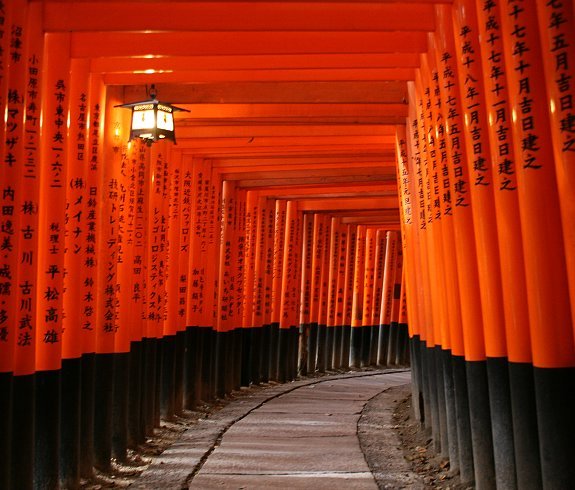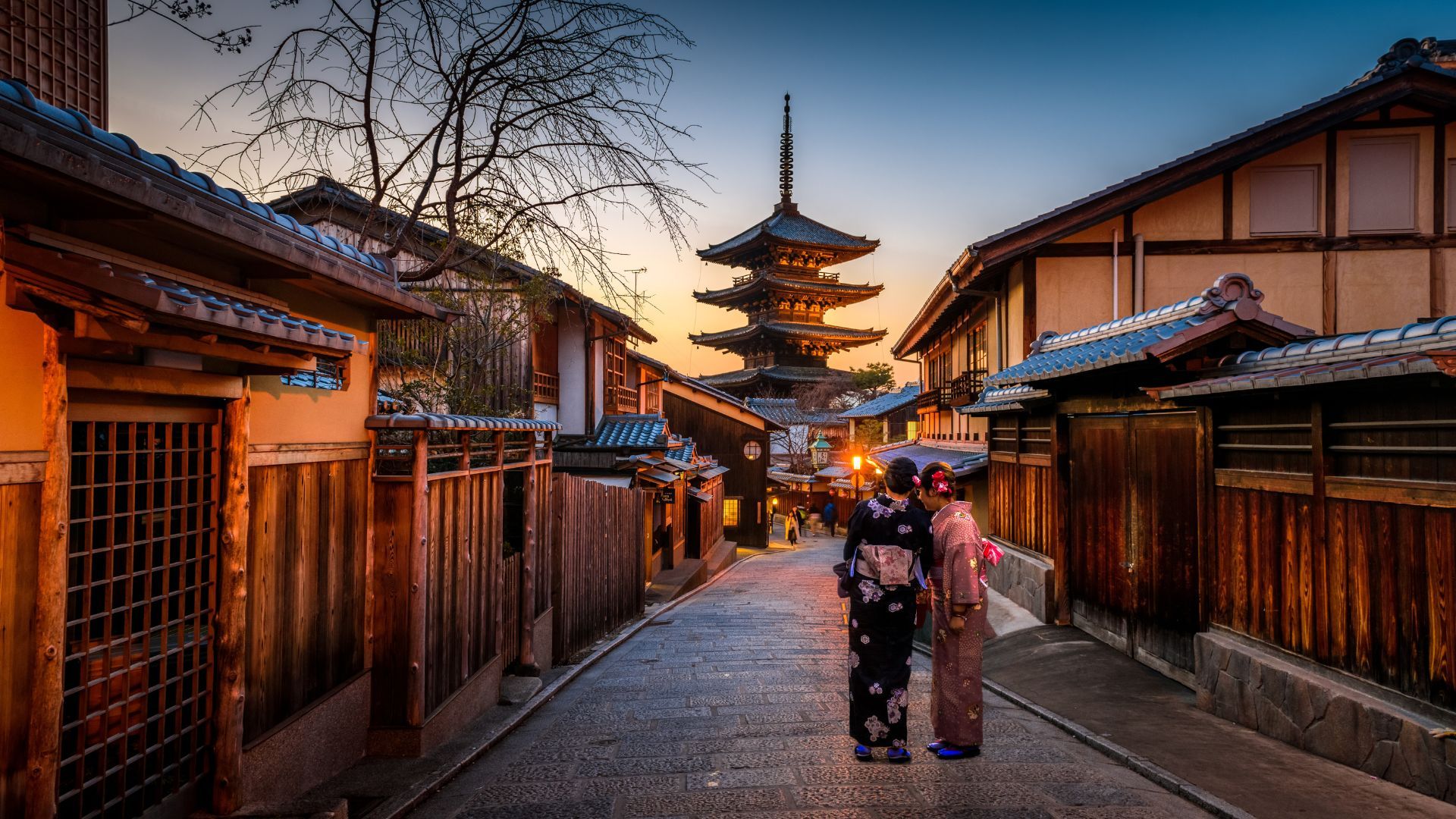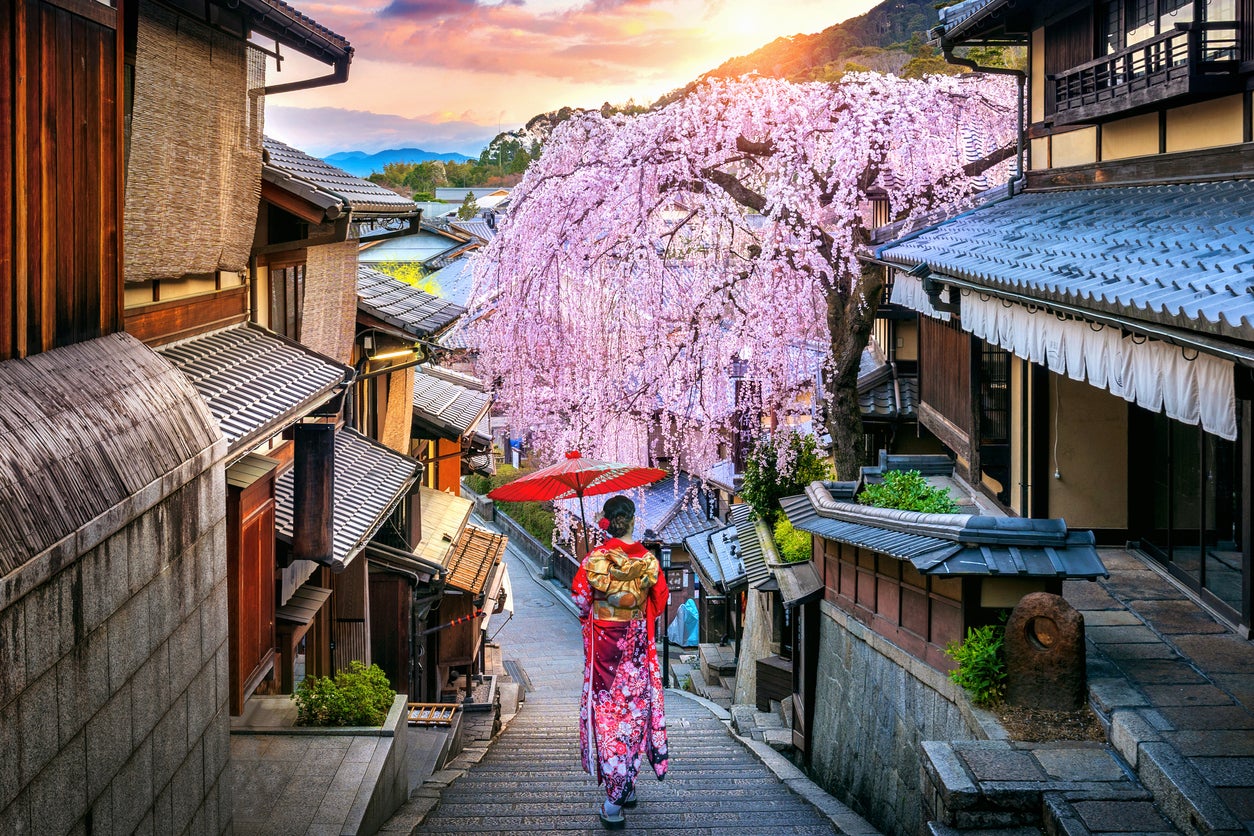Japan, a nation steeped in rich culture and stunning landscapes, offers countless attractions that captivate travelers. When planning your Japan travel itinerary, prioritizing the must-see landmarks is crucial for an unforgettable experience. From the iconic Tokyo Tower, to the serene beauty of Mount Fuji, each site tells a unique story while showcasing the beauty of this remarkable country. Whether you’re wandering through Kyoto’s historic Fushimi Inari Shrine or relaxing on the pristine beaches of Okinawa, Japan promises adventure and discovery at every turn.
Win a Free Trip to Japan!
Experience cherry blossoms and ancient temples
Tokyo Tower
When planning your Japan Travel itinerary, don’t overlook the iconic Tokyo Tower. Standing at 333 meters, this symbol of modern Japan offers breathtaking views of the city skyline. Here’s what makes it a must-see:
-
Observation Decks:
- Main Deck: At 150 meters, visitors enjoy panoramic views and can spot famous landmarks like the Tokyo Skytree and the Imperial Palace.
- Top Deck: For those seeking an elevated experience, venture up to 250 meters for unparalleled sights.
-
Unique Experience:
- Night Illuminations: Tokyo Tower transforms into a glowing spectacle after sunset, giving travelers stunning photo opportunities.
- Historical Significance: Inspired by Paris’s Eiffel Tower, it served as a telecommunications hub from 1958 and continues to be a symbol of Japan’s post-war rebirth.
-
Attractions Nearby:
- Shiba Park: A picturesque area perfect for a leisurely stroll.
- Zojo-ji Temple: This historic site adds a cultural touch to your Japan Travel journey.
Comparison Table
| Feature | Main Deck | Top Deck |
|---|---|---|
| Height | 150 meters | 250 meters |
| View | City skyline | Extended skyline |
| Average Visit Time | 1-2 hours | 1 hour |
| Entry Fee | Lower | Higher |
Incorporating Tokyo Tower into your Japan Travel plans offers a unique blend of modernity and tradition, making your experience unforgettable.

Kyoto’s Fushimi Inari Shrine
When it comes to Japan travel, Fushimi Inari Shrine stands out as an essential destination. Renowned for its mesmerizing scenery and spiritual significance, this shrine captures the essence of Japanese culture. Here’s what to know:
-
Unique Features:
- Torii Gates: The path lined with thousands of bright orange torii gates creates an enchanting atmosphere. As you walk through, these gates symbolize your journey through life.
- Fox Statues: The fox, known as the messenger, appears frequently throughout the shrine. These intricate statues add a mystical touch to the experience.
-
Activities:
- Hiking Trails: The trails behind the main shrine lead to the mountain, presenting opportunities for hiking and breathtaking views.
- Photography: Capture stunning photographs at every turn, especially early in the morning or late afternoon when the light is perfect.
-
Accessibility:
- Location: Easily accessible by train, Fushimi Inari Shrine sits just a short ride from Kyoto Station.
- Admission: Open year-round and free to enter, making it a budget-friendly spot for all travelers.
In conclusion, Fushimi Inari Shrine is not just a sightseeing spot; it’s a profound journey through nature and culture, making it a highlight of any Japan travel itinerary. Whether you’re a spiritual seeker or simply an admirer of beauty, this shrine offers a unique experience that resonates long after you leave.
Hiroshima Peace Memorial Park
Hiroshima Peace Memorial Park stands as a powerful tribute to the resilience of the human spirit following the catastrophic events of August 6, 1945. A central destination for Japan travel, this park serves both as a memorial and an educational site. Here’s why you should include it in your itinerary:
Key Highlights of Hiroshima Peace Memorial Park
- A-Bomb Dome: This iconic structure, preserved in its post-explosion state, symbolizes the impact of the atomic bomb. Its haunting architecture draws visitors from around the globe.
- Peace Memorial Museum: Explore poignant exhibits detailing the events of that fateful day, survivor testimonies, and the ongoing pursuit of world peace.
- Memorial Cenotaph: A serene, arch-shaped monument that honors all victims. It provides a moment of reflection amidst the park’s lush surroundings.
Visitor Tips
- Best Time to Visit: Spring (March to May) offers stunning cherry blossoms; autumn (September to November) showcases vibrant foliage.
- Don’t Miss: Attend the lantern-floating ceremony on August 6, commemorating the anniversary of the bombing with thousands of illuminated lanterns.
Incorporating Hiroshima Peace Memorial Park into your Japan travel experience enriches your understanding of history while promoting a message of peace and hope for the future.
Nikko National Park
Nikko National Park is a breathtaking destination that should not be overlooked during your Japan Travel experience. Nestled in the Tochigi Prefecture, this UNESCO World Heritage site boasts stunning landscapes, historical buildings, and rich culture. Here’s what makes Nikko an essential stop on your Japanese journey:
-
Natural Beauty: The park features majestic mountains, shimmering lakes, and serene waterfalls. Key spots include:
- Lake Chuzenji: A picturesque lake formed by a volcanic eruption, perfect for hiking and boating.
- Kegon Falls: One of Japan’s most famous waterfalls, with a height of 97 meters.
-
Cultural Significance: Nikko is home to many significant shrines and temples, such as:
- Toshogu Shrine: A lavish mausoleum dedicated to Tokugawa Ieyasu, the founder of the Tokugawa shogunate.
- Rinnoji Temple: Renowned for its three monumental statues of Buddha.
-
Activities: Visitors can indulge in various outdoor activities:
- Hiking trails ranging from easy strolls to challenging climbs
- Seasonal festivals showcasing traditional Japanese culture
In comparison to other attractions on your Japan Travel itinerary, Nikko National Park uniquely combines natural wonders with rich historical significance. Whether you’re seeking adventure, tranquility, or cultural immersion, this park offers a little bit of everything. Make sure to allocate time in your journey to explore the treasures of Nikko National Park!

Osaka Castle
When exploring Japan travel, don’t miss Osaka Castle, one of Japan’s most iconic landmarks. This impressive structure, originally built in the 16th century, showcases stunning architecture and rich history, making it a must-visit attraction in Osaka.
Key Features:
- Architectural Marvel: The castle features a unique blend of traditional Japanese design and modern influence, highlighted by its picturesque five-story main tower.
- Historical Significance: As a symbol of unification in Japan, Osaka Castle played a vital role during the country’s tumultuous feudal era.
- Beautiful Surroundings: The castle is surrounded by expansive gardens and a moat, offering a serene atmosphere ideal for leisurely strolls and photography.
Visitor Experience:
- Exhibits & Museums: Inside the castle, visitors can explore informative exhibits detailing its history, artifacts, and the life of the famous warlord Toyotomi Hideyoshi.
- Panoramic Views: Ascend to the top floor for breathtaking views of the city skyline and the surrounding greenery, especially stunning during cherry blossom season.
Tip: Consider timing your visit during the cherry blossom festival to experience the beauty of nature alongside historic marvels.
In summary, incorporating Osaka Castle into your Japan travel itinerary provides a unique opportunity to immerse yourself in Japan’s rich history and stunning architecture. Don’t forget your camera!
Mount Fuji
When discussing Japan Travel, one cannot overlook the iconic Mount Fuji. This majestic peak, standing at 3,776 meters, is Japan’s highest mountain and a symbol of beauty and strength. Here’s what makes Mount Fuji a must-see attraction:
- Cultural Significance: Revered in Japanese culture, Mount Fuji has inspired countless artists and poets. It’s featured in famous works, including Hokusai’s woodblock prints.
-
Climbing Opportunities: Each year, thousands flock to climb Mount Fuji during the officially open climbing season from early July to early September. The experience varies with each trail:
- Yoshida Trail: Most popular; offers facilities and picturesque views.
- Subashiri Trail: Less crowded; provides unique terrain.
-
Viewing Spots: For those who prefer to admire the mountain without the climb, several fantastic spots exist:
- Lake Kawaguchi: Stunning reflections of Mount Fuji can be seen here, especially during sunrise.
- Oshino Hakkai: This peaceful village boasts traditional scenery with fantastic views of the mountain.
In summary, a trip to Mount Fuji envelopes visitors in Japan’s natural beauty and cultural richness. Whether climbing or admiring from afar, this iconic peak is an essential stop during your Japan Travel itinerary.
The Historic Villages of Shirakawa-go
When planning your Japan travel itinerary, don’t overlook the enchanting Historic Villages of Shirakawa-go. Nestled in the Japanese Alps, this UNESCO World Heritage site invites visitors to step back in time and experience traditional rural life.
Key Highlights:
- Gassho-Zukuri Architecture: The villages are famed for their steep-roofed farmhouses, known as gassho-zukuri, designed to withstand heavy snowfall. These structures can be up to 250 years old!
-
Seasonal Beauty: Each season offers a distinct charm:
- Spring: Cherry blossoms bloom, painting a picturesque landscape.
- Summer: Lush green rice fields create a vibrant atmosphere.
- Autumn: The foliage bursts into shades of red and gold.
- Winter: Snow-covered roofs provide a magical scenery, especially during the evening illumination events.
Activities in Shirakawa-go:
- Guided Tours: Local guides offer insights into traditional farming methods and lifestyles, making your visit educational and fascinating.
- Onsen Experience: Nearby hot springs allow travelers to relax and enjoy stunning mountain views after a day of exploration.
Visiting the Historic Villages of Shirakawa-go is a unique experience that highlights Japan’s rich culture. The serene atmosphere makes it a perfect destination for those looking to embrace the essence of Japan travel. Whether you’re capturing photographs or enjoying a quiet moment, Shirakawa-go will undoubtedly leave a lasting impression.

Himeji Castle
Himeji Castle stands as a magnificent symbol of Japan’s rich history and architectural brilliance. Often referred to as the “White Heron Castle” due to its stunning white exterior, it offers a captivating glimpse into Japan’s feudal past. When planning your Japan travel, Himeji Castle should be at the top of your list for several compelling reasons:
- UNESCO World Heritage Site: Recognized for its cultural significance, Himeji Castle is a designated UNESCO World Heritage Site since 1993.
-
Architectural Features: The castle showcases an impressive blend of defensive structures and ornate design, including:
- Over 80 buildings, each adding to its grandeur.
- A complex system of moats and walls designed for protection.
- Stunning views from the castle keep, accessible after a short climb.
Comparison Table: Himeji Castle vs. Other Famous Castles in Japan
| Feature | Himeji Castle | Osaka Castle | Nagoya Castle |
|---|---|---|---|
| UNESCO Status | Yes | No | No |
| Year Constructed | 1609 | 1583 | 1612 |
| Architectural Style | Japanese feudal | Japanese feudal | Japanese feudal |
| Accessibility | High (easy access) | Moderate | Moderate |
In conclusion, a visit to Himeji Castle enriches your Japan travel experience, combining history, beauty, and cultural significance that leaves a lasting impression.
Nara Park
Nara Park is a true gem for anyone indulging in Japan Travel. Spanning over 1,200 acres, this sprawling park is not only a UNESCO World Heritage Site but also home to some of Japan’s most important cultural treasures. Exploring Nara Park offers a harmonious blend of nature and history that captivates every visitor.
Highlights of Nara Park:
- Friendly Deer: The park is famous for its freely roaming deer, considered messengers of the gods in Shinto. Visitors can feed them with specially sold deer crackers for a memorable experience.
-
Historic Temples:
- Todai-ji: Home to the Great Buddha statue, this impressive temple draws thousands of visitors each year.
- Kasuga-taisha: Renowned for its hundreds of bronze lanterns, this Shinto shrine provides a stunning view, especially during the lantern festival.
- Scenic Landscape: The park’s expansive lawns and ancient trees create a picturesque environment perfect for leisurely strolls or picnics.
Why Visit Nara Park During Your Japan Travel?
- Rich Culture: Experience Japan’s heritage through its art and architecture.
- Wildlife Interaction: Enjoy the unique opportunity to interact with the friendly deer.
- Accessibility: Just a short train ride from Kyoto, it’s an easy addition to your itinerary.
In summary, Nara Park is a must-visit destination for anyone engaged in Japan Travel. It combines natural beauty with rich cultural experiences, making it an unforgettable stop on your journey through Japan.
Okinawa’s Beaches
When it comes to Japan Travel, one cannot overlook the stunning beaches of Okinawa. This tropical paradise stands apart from the mainland with its unique culture and breathtaking coastal scenery. Here’s why you should prioritize Okinawa’s beaches on your travels:
- Crystal-Clear Waters: The beaches are known for their turquoise waters, ideal for swimming, snorkeling, and diving. The visibility often exceeds 30 meters, revealing vibrant marine life and colorful coral reefs.
-
Diverse Beach Experiences:
- Nishihama Beach (Hateruma Island): Famous for its fine white sand and serene atmosphere.
- Zamami Beach (Kerama Islands): Popular for water sports and dolphin watching.
- Manza Beach: Offers both relaxation and a range of activities like parasailing.
- Cultural Significance: The beaches often host traditional Okinawan festivals, where you can experience local music, dance, and cuisine.
- Accessibility: Many of these beautiful beaches are easily reachable from major cities in Okinawa, such as Naha, making them a convenient choice for visitors.
In summary, Okinawa’s beaches offer a unique blend of natural beauty, recreational activities, and cultural experiences, making them a top attraction for anyone considering Japan Travel. Don’t miss out on this island gem when planning your itinerary!
Frequently Asked Questions
What are the top attractions to visit in Japan?
Japan is home to numerous breathtaking attractions, but some of the must-see places include Mount Fuji, Tokyo’s historic districts like Asakusa, the serene gardens of Kyoto, the Hiroshima Peace Memorial Park, and the picturesque snow-covered landscapes of Hokkaido. Each site offers a unique glimpse into Japan’s rich culture, historical significance, and natural beauty, making them essential stops on any travel itinerary.
When is the best time to visit the attractions in Japan?
The best time to visit Japan generally depends on what you wish to experience. The cherry blossom season in spring (March to May) is a stunning time to enjoy cultural festivals and beautiful scenery. Autumn (September to November) also offers delightful weather and vibrant fall foliage, especially in Kyoto. Winter is perfect for ski resorts and hot springs, while summer can be hot and humid, yet is ideal for beach outings and vibrant local festivals.
What transportation options are available to get around Japan’s attractions?
Japan boasts an extensive and efficient transportation network that makes traveling between attractions seamless. The Shinkansen, or bullet train, connects major cities at high speeds, allowing for quick journeys. Local trains, subways, and buses provide access to urban areas and smaller towns. For added convenience, consider purchasing a Japan Rail Pass for unlimited train travel, and don’t forget that taxis and bike rentals are also popular options for shorter distances.
Are there any cultural etiquette tips I should know when visiting attractions in Japan?
Yes, understanding and respecting cultural etiquette is vital while visiting attractions in Japan. Always bow slightly when greeting someone as a sign of respect. When visiting temples or shrines, be sure to dress conservatively and follow local customs like cleansing hands before entering. It’s also important to keep noise levels down in public spaces, to remove shoes when entering someone’s home, and to avoid tipping, as it is not a common practice in Japanese culture.
What should I expect in terms of language barriers when visiting Japan?
While Japanese is the official language, English is increasingly understood, particularly in tourist areas and major cities. Signs in public transport and attraction locations are often bilingual or include pictorial representations. However, outside urban centers, English proficiency may be lower. It’s beneficial to learn a few basic Japanese phrases, carry a translation app, or use visual aids to enhance communication and ensure a more enriching experience.
